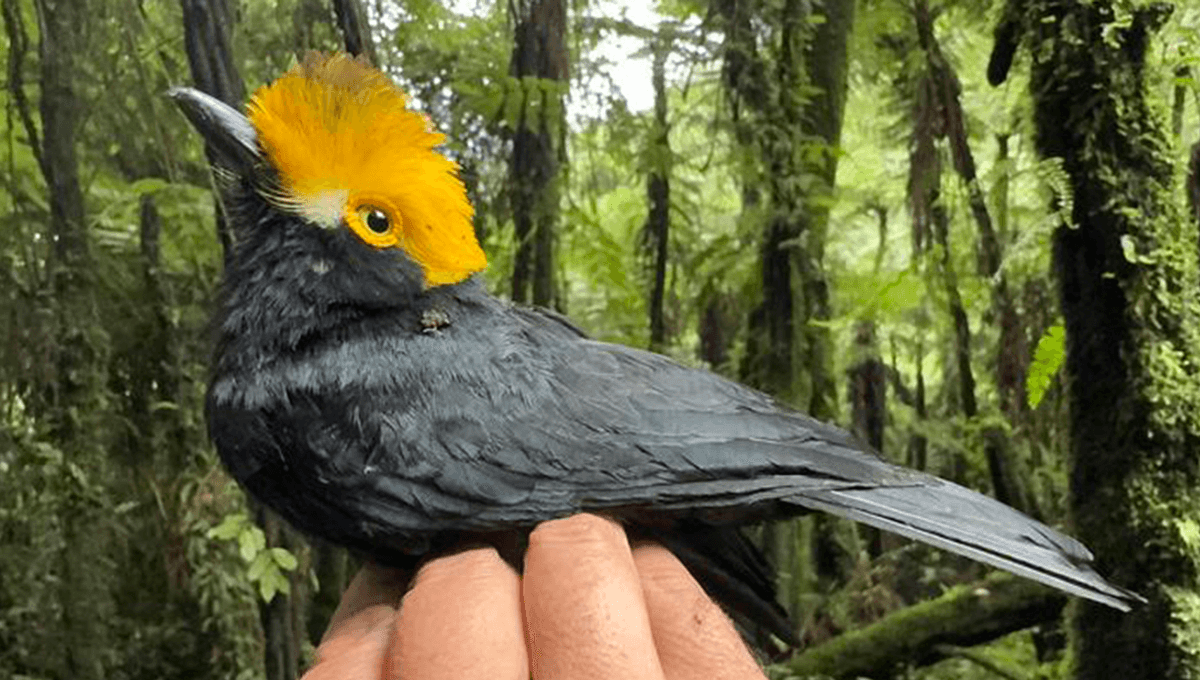
How far would you go to look for something that might not be there at all? Well, researchers from the University of Texas at El Paso spent six weeks looking for a lost bird species in the jungles of the Democratic Republic of the Congo, and they have managed to capture the first ever photo of the yellow-crested helmetshrike (Prionops alberti).
“It was a mind-blowing experience to come across these birds. We knew they might be possible here, but I was not prepared for how spectacular and unique they would appear in life,” said Michael Harvey, PhD, an ornithologist and UTEP assistant professor in the Department of Biological Sciences, in a statement.
The yellow-crested helmetshrike, prior to this expedition, had not been seen for nearly 20 years, leading to fears that the species may have gone extinct. The team trekked over 120 kilometers (75 miles) through the depths of the Itombwe Massif, a mountain range in the eastern part of the Democratic Republic of the Congo.
The team, which consisted of both ornithologists from the US and Congolese researchers from the Centre de Recherche en Sciences Naturelles, stumbled upon the helmetshrikes, which they described as “noisy and active groups in the midstory of the forest.”
The bird has not been seen for so long because of the ongoing wars and political instability in the country that made visiting the area difficult. During the expedition the team found 18 of the yellow helmetshrikes at three different sites. The photos were then confirmed by Cameron Rutt, PhD, who leads the Search For Lost Birds Project at the American Bird Conservancy.
“This inspires hope that perhaps the species still has a reasonably healthy population in the remote forests of the region,” Harvey said. The herpetology team on the expedition also managed to rediscover an amphibian species, the red-bellied squeaker frog (Arthroleptis hematogaster) that was last seen in the 1950s.
However the team are concerned for the future of the recently rediscovered frog and bird species due to the threats of habitat loss due to the growth of agriculture as well as mining. The IUCN Red List suggests that the species will lose more than 90 percent of its range due to climate change by 2080.
“Mining and logging as well as the clearing of forests for agriculture are making inroads deep into the forests of the Itombwe range. We are in discussions with other researchers and conservation organizations to further efforts to protect the region’s forests and the helmetshrike,” continued Harvey.
This is by far not the first species to be rediscovered recently. In South Africa a golden mole was seen swimming through the sand dunes for the first time in 80 years, while over in Europe a tap dancing spider was spotted alive in Portugal for the first time since the 1930s.
“Right now is a golden opportunity to protect these tropical forests, so that we don’t lose species like the helmetshrike before they are known and studied,” concluded Harvey.
Source Link: First Ever Photo Taken Of "Lost" Bird Species, And Boy Is It Fabulous